What’s In Your Bag? Heads Up On Bio-Hazards
May 5, 2014
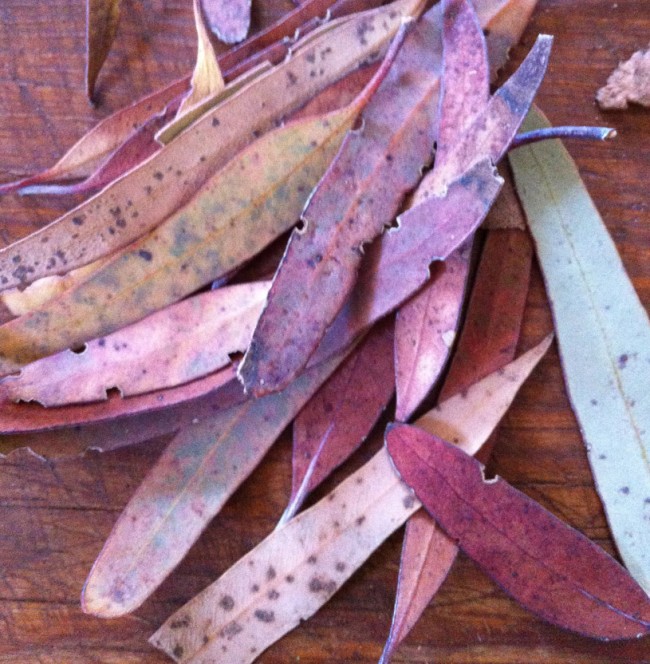 Gathering from the wild is a tricky business at best.
Gathering from the wild is a tricky business at best.
Envelopes full of leaves transported across borders are literally ticking time bombs filled with bio-hazards with the potential to decimate entire plant populations.
It is distressing to hear people describing their enthusiastic gathering of wildflowers to extract plant colour or to read of yet another person shipping un-processed plant material across their country – or worse still, internationally – to satisfy a desire for a particular colour.
Admittedly the indigo I have taken to using from time to time is a blatant straying from the path of bio-regionally gathered dyes, but at least it is well-boiled in the processing which will discourage the growth of bacteria.
The accepted rule of restricting yourself to 10% of a population is all very well, but each time someone takes that 10% the population decreases and before you know where you are the last plants or fungi are gone.
Limiting ourselves to windfalls is the sensible option.
Threats – and I am speaking globally – include plants as introduced invasives, pests that decimate plants and diseases that kill plants. I hear artists proudly telling how they foil customs and quarantine inspections by carrying their mud samples in the plastic sanitary disposal bags so frequently supplied in motel rooms. United States law clearly states that no soil samples may be imported. Simply carrying a bunch of flowers from one state into the next in Australia has the potential to expose you to a $100,000 fine. Weeds have populated entire countries. They travelled on the shoe soles of early settlers and in the hoof crevices of their horses.
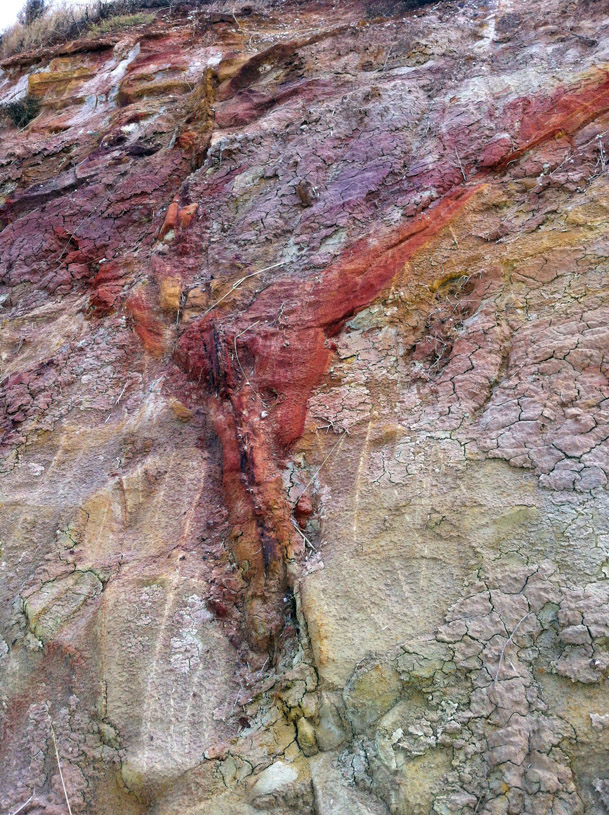 Now they are even more widely distributed by the tyres of all-terrain vehicles – let alone the humble passenger car. There’s good reason why roadsides have an abundant weed crop; it’s where they usually begin. On farms they can also be introduced in stockfeed as well as in the coats of livestock. It’s why in Australia the annual off-shears markets are where sensible people purchase their sheep. Stock sold privately will also be shorn prior to shipping if both parties are responsible and thoughtful as regards the environment.
Now they are even more widely distributed by the tyres of all-terrain vehicles – let alone the humble passenger car. There’s good reason why roadsides have an abundant weed crop; it’s where they usually begin. On farms they can also be introduced in stockfeed as well as in the coats of livestock. It’s why in Australia the annual off-shears markets are where sensible people purchase their sheep. Stock sold privately will also be shorn prior to shipping if both parties are responsible and thoughtful as regards the environment.
An act as simple as tossing the combings from a greasy fleece into the compost heap can not only being a new weed into your garden, it could also introduce an arboreal pest. There are things we can hardly see, such as the punctuation-sized hemlock woolly adelgid, that have been devastating the forests of northeast America. It is hardly likely to take notice of the Canadian border.
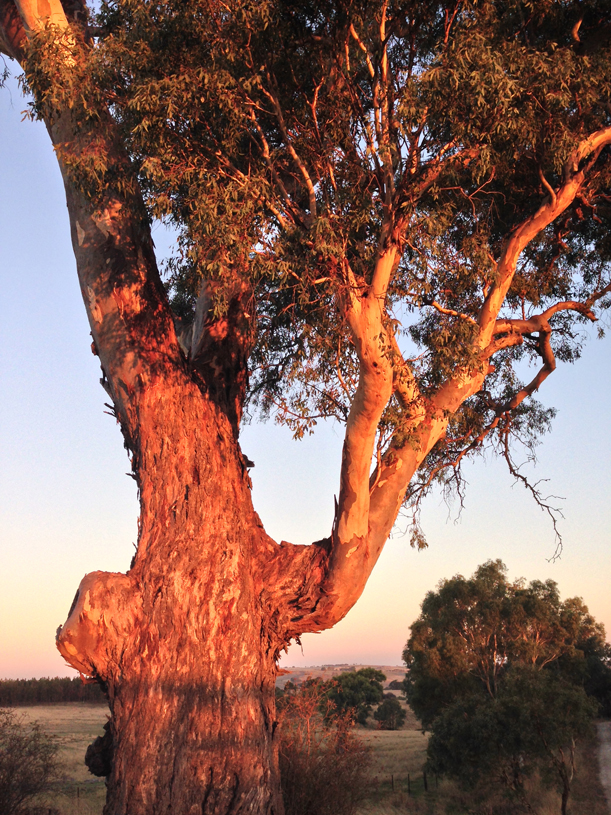 Myrtle rust was attacking Australia’s eucalypts for years before anyone noticed. A fungal disease that spreads on the wind, it also kills lilly pilly, tea tree and bottle brush. The recommended treatment is to cut and burn or spray with fungicide, but those in the know admit there is no way of eradicating it. If Australia loses her most prolific genus, the beautifully-adapted eucalyptus (which seems likely in the long-term), the consequences for our island continent will be disastrous.
Myrtle rust was attacking Australia’s eucalypts for years before anyone noticed. A fungal disease that spreads on the wind, it also kills lilly pilly, tea tree and bottle brush. The recommended treatment is to cut and burn or spray with fungicide, but those in the know admit there is no way of eradicating it. If Australia loses her most prolific genus, the beautifully-adapted eucalyptus (which seems likely in the long-term), the consequences for our island continent will be disastrous.
You have only to Google arboreal diseases to read of hundreds more disappearing species. On the North American continent these include dogwood, chestnut, maple, oak, elm, cypress, butternut,black walnut, aspen, beech and pine – to name but a few. In New Zealand the iconic Kauri is dying everywhere, under attack from Kauri dyeback.
Along with these pests and diseases come the well-meaning but often misguided efforts to save the attacked species, such as injecting soils with long-lasting hydrocarbon-based toxins in the hope of killing the problem micro-fauna. Unfortunately these poisons do not discriminate and we are seeing the results in the rapidly decreasing bee populations as well as the escalating cancer rates around the world.
So please, do not post leaves to your friends.
Do not take soil samples home.
Unless using properly processed extracts, dye your cloth in situ with local material.
If you must paint with soil, do it at or near the sample site.
Leave your siftings there, wash your boots before you go home and give serious thought to the consequences of seemingly harmless actions.
As the New England forests burst into leaf this spring, they will sequester as much carbon as the Amazon rainforest. That’s a good thing. Australia, the world’s 6th largest country, is also the driest. By 1995, the forest cover had been reduced to less than 5% of the landmass. We have little left to lose, all of it is precious – and too much is already being clear-felled for wood chips and toilet paper without us adding more threats to the equation.
If the trees all die we will, too. It’s as simple as that. There won’t be enough oxygen to sustain us, or other large animals, rainfall will become more erratic and the weather in general more extreme.
It will happen in our lifetime and it’s not a legacy I want to leave.
___________________________________
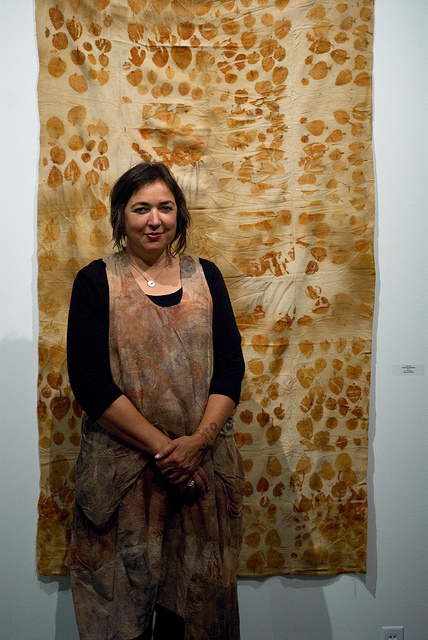 India Flint is a gardener, forest wanderer & tumbleweed, stargazer & stitcher, botanical alchemist & string twiner, working traveller, dreamer, writer and the original discoverer of the eucalyptus ecoprint…dyeing for a living in the deep south.
India Flint is a gardener, forest wanderer & tumbleweed, stargazer & stitcher, botanical alchemist & string twiner, working traveller, dreamer, writer and the original discoverer of the eucalyptus ecoprint…dyeing for a living in the deep south.
Her creative practice conflates the visual and written poetics of place and memory. Using ecologically sustainable contact print processes from plants and found objects together with walking, drawing, assemblage, mending, stitch and text as a means of mapping country, she recodes and records responses to landscape. With cloth, paper, stone, windfall biological material, water, minerals, bones – the discarded artefacts and hard detritus of human inhabitation – and the local weed burden, Flint creates work described by Associate Professor Chris Orchard (during his opening address at ‘muddy waters’, Murray Bridge Regional Gallery, South Australia, March 2013) as using “ the earth as the printing plate and time as the press.”
She was a featured speaker at SDA 2011 Confluence conference in Minneapolis, where she had a concurrent featured exhibition at Nash Gallery.
See her article in Spring 2014 Surface Design Journal entitled Marking the Way Home:
Roz Hawker, Isobel McGarry, Judy Keylock, Brece Honeycutt.
Visit her website at www.indiaflint.com
Visit her blogs at prophet-of-bloom.blogspot.com.au and mutabilia.wordpress.com
Find her on Facebook at www.facebook.com/pages/India-Flint
Follow her on Instagram via #prophetofbloom
View her books on Blurb at au.blurb.com/user/store/indianaflint
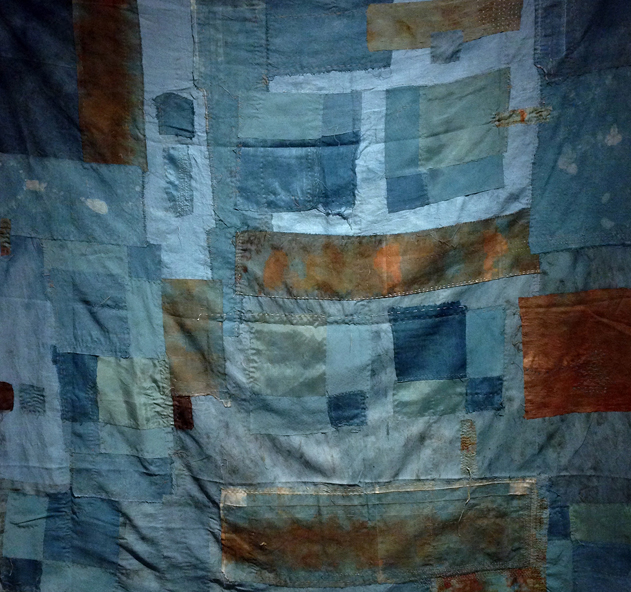
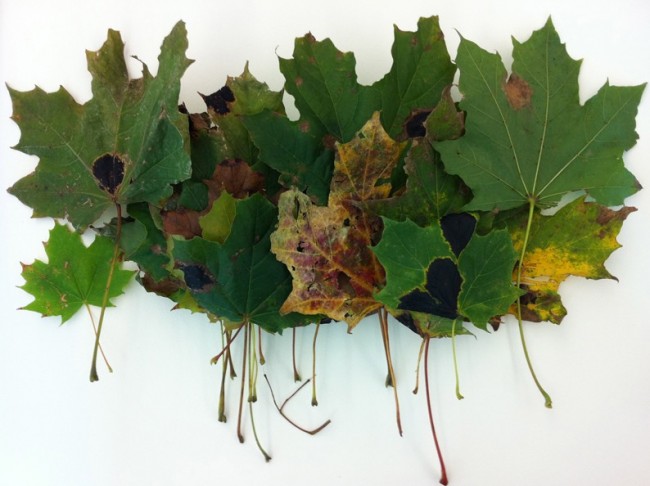
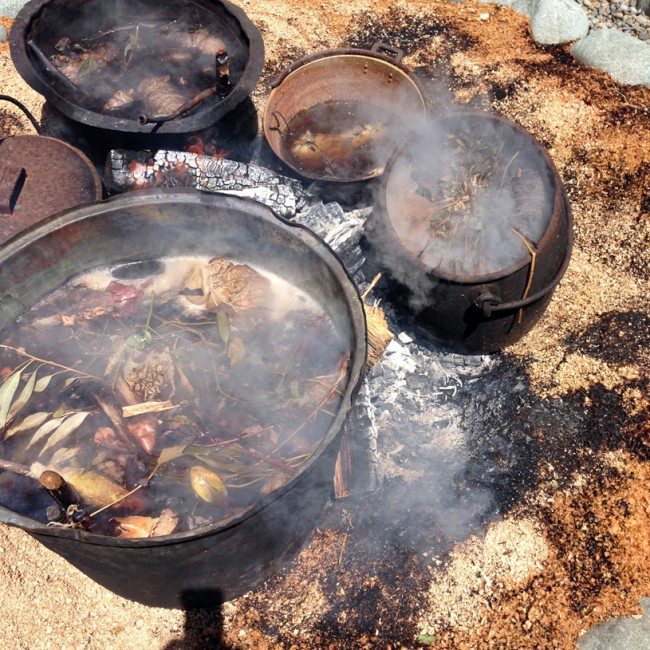

15 Comments
Pallas says
May 6, 2014 at 1:05 am
Thank you, India. I am taking this message to heart.
Ro Bailey says
May 6, 2014 at 2:40 am
Great article, India, I absolutely agree with you on the legacy we will leave to our children and grandchildren, it disturbs me immensely but I don't think people are willing to do enough to stop it.
Emma Fountain says
May 6, 2014 at 3:39 am
Excellent, poignant and succinct. Thanks.
Chrissie day says
May 6, 2014 at 2:36 pm
But you keep teaching the method and firing everyone up to start taking the leaves in the first place.
Marijke Bongers says
May 6, 2014 at 5:18 pm
Thank you India. Again you inspired me to be careful with our precious earth. Pallas shared this article on Facebook and I will share it too in my Dutch facebook group about wool. Also will tell and share every time I tell people about plant dyeing.
Mo Crow says
May 6, 2014 at 5:51 pm
well said India!
India Flint says
May 6, 2014 at 7:51 pm
Yes I do, Chrissie. Windfall leaves from where you happen to be working at the time.
Hansie says
May 8, 2014 at 7:49 pm
Absolutely none of us are careful enough because every now and then our enthusiasm and inquisitive natures leads us to forget. Therefore we need to keep reminding ourselves - and you in particular do a great job of this. Would you share your knowledge of mistletoe, if in fact you know? The damage it is doing to our young trees planted by the thousands along our new motorways is so soul-destroying as I drive between Melbourne and Yass. Yet the most vibrant yellow is the result in the dye pot - a primary colour. Could it be harvested,processed and used? Would it save or trees or is there some balance in nature I am not aware of??
Polly M. says
May 9, 2014 at 5:46 pm
Holy shi...bori, India! You opened up Pandora's bag and took a peek inside. If we follow just one of the infinite number of tangled threads in there it leads us into a world wide web of human-generated biohazards. You bring up thorny issues for a global community of eco-dyers to consider: contamination of our materials, degradation of the environment we depend on, death of an ecosystem - and the part we play in this. I wonder how authentic and sustainable eco-dying really is for us city dwellers in particular? Certainly not anything ecological sounding about growing non-native plants sold at my local nursery that require more water and defensive chemical sprays. Collecting windfall in my Salt Lake City neighborhood to dye cotton that was made in China? Almost impossible to find US-made yardage; it all goes to the military. How big a footprint do we want to make as we strive to create our eco-art? Driving miles to a native plant sight in the mountains or hours to collect red soils in southern Utah? Jetting off to a workshop in northern California or southern France? Buying, shipping, and sharing materials across continents? Multiply that by 7 billion people on the planet and we have quite an invasive, weedy, network. No easy answers, but it is certainly worth looking at our personal practices and debating correct action.
India flint says
May 13, 2014 at 12:17 am
Pandora : I think city based dyers have a great opportunity to source leaves for dyeing from florists trash - plant dyes made from waste are always going to beat synthetic dyes in the sustainability stakes And Hansie : mistletoe seems to be in imbalance all over Australia. It's important for certain types of butterflies but ( as with quite a few of the lichens) can very quickly overcome the host. A selective harvest program would make sense And as for myself, yes, I should probably stop whizzing around the whirled but I suspect I am probably living a more useful life sharing dye techniques than if I simply retreated back to quiet country anonymity
Karen Scribner says
July 30, 2014 at 6:54 pm
The young trees (see comment about mistletoe) are most likely planted too deeply. This puts stress on the tree so the parasites can invade. See www.dirtdoctor.com for proper tree care useful in any part of the world.
India Flint says
July 30, 2014 at 9:49 pm
Sorry to contradict you Karen but the trees in question are aged between twenty and three hundred years and self sown. The problem is with tree clearing for agriculture The mistletoe (amyema miraculosa) is spread by birds. Simple population imbalance but almost impossible to control.
Joan Schlichting says
March 24, 2015 at 11:02 pm
I recently traveled from New Zealand to Australia and back home to the US. Being a newbie and not knowing what the laws were, I declared the raw wool I had with me and declared I was on a farm with animals several times; customs and agricultural checks had no problem with my declarations and waved me through.
Marijke Bongers says
March 26, 2015 at 3:59 am
Hi, it is almost one year later! I now know my daughter and I will be part of the 5 day class in Schotland this summer. Can't wait!
Morgen says
May 28, 2015 at 11:41 am
Pandora's box indeed! Polly M makes some excellent points - especially about world travel and the use of cotton fabrics. India says: "And as for myself, yes, I should probably stop whizzing around the whirled but I suspect I am probably living a more useful life sharing dye techniques than if I simply retreated back to quiet country anonymity" With deep respect for your incredible knowledge and experience, I must question your reasoning. You are teaching your process all over the world and those folk will then go out and seek plants for their dye processes, some may even become teachers themselves and hop on planes to share their knowledge too, and make some dollars. I have attended quite a few workshops at Maiwa Handprints in Vancouver and noted that a large majority of people in the class travel from afar themselves, many fly. A 'tangled thread' indeed it is. There is nothing wrong with country anonymity - simple lives can have simpler impacts. The cotton industry also has serious environmental and human implications, as I am sure you know. I believe that we we all need to start doing things better, starting with ourselves. Using recycled fabrics which I know you do, but also using organic and sustainable fabrics supports good industries (and there are some). Basically I think we all need to seek balance and quit pointing fingers, and to support good stewardship in a way that people will hear you, through words and deeds, with love and respect. I would also like to acknowledge the impact that your book "Eco Colour" has made on my own art practice. I stopped oil painting a number of years ago because of the toxicity of the materials. I focused on my other love, fiber art, and worked with fiber reactive dyes for years. After a couple of natural dye workshops at Maiwa and then reading your book, I was inspired and moved to transition towards plant dyes, a process which I am still in. So with your's and the help of others in the field, I am slowly changing my practice. This is a a good thing don't you think?
Related Blog Articles
Confluence Conference
Friday Fibers Roundup: Embroidered Flora
Confluence Conference
Friday Fibers Roundup: Embroidery Evolution
No Thumbnail Available
Confluence Conference
Friday Fibers Roundup: Woven Color